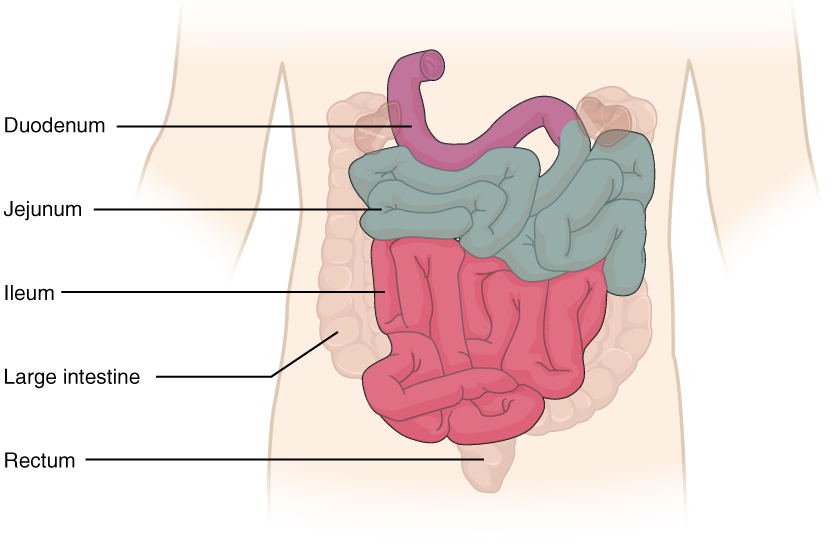| << Chapter < Page | Chapter >> Page > |
The word intestine is derived from a Latin root meaning “internal,” and indeed, the two organs together nearly fill the interior of the abdominal cavity. In addition, called the small and large bowel, or colloquially the “guts,” they constitute the greatest mass and length of the alimentary canal and, with the exception of ingestion, perform all digestive system functions.
Chyme released from the stomach enters the small intestine , which is the primary digestive organ in the body. Not only is this where most digestion occurs, it is also where practically all absorption occurs. The longest part of the alimentary canal, the small intestine is about 10 feet long in a living person . Since this makes it about five times longer than the large intestine, you might wonder why it is called “small.” In fact, its name derives from its relatively smaller diameter of only about 1 inch, compared with 3 inch for the large intestine. As we’ll see shortly, in addition to its length, the folds and projections of the lining of the small intestine work to give it an enormous surface area, which is approximately 200 m 2 , more than 100 times the surface area of your skin. This large surface area is necessary for complex processes of digestion and absorption that occur within it.
The coiled tube of the small intestine is subdivided into three regions. From the stomach to large intestine, these are the duodenum, jejunum, and ileum ( [link] ).
The shortest region is the 10 inch duodenum , which begins at the pyloric sphincter. Just past the pyloric sphincter is the duodenal papilla . Located in the duodenal wall, it is where the bile duct (through which bile passes from the liver) and the main pancreatic duct (through which pancreatic juice passes from the pancreas) join the duodenum. The sphincter of Oddi regulates the flow of both bile and pancreatic juice from the papilla into the duodenum. The second part of the small intestine, the jejunum is about 3 feet long and runs from the duodenum to the ileum. The ileum is the longest part of the small intestine, measuring about 6 feet in length. The ileum joins the cecum, the first portion of the large intestine, at the ileocecal sphincter (or valve). The large intestine frames these three parts of the small intestine.


Notification Switch
Would you like to follow the 'Digestive system' conversation and receive update notifications?